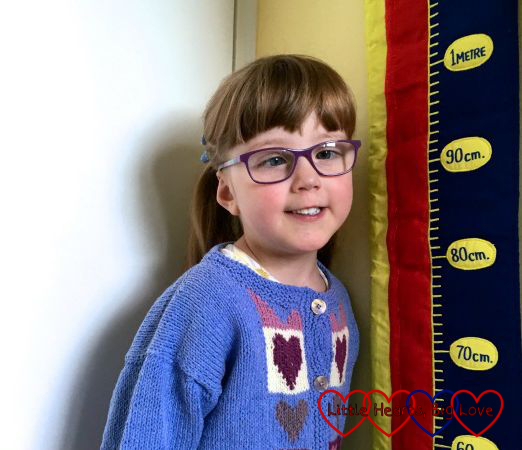This Is What 'Normal' Looks Like for Our Child With a Rare Heart Defect

Most of the time our family life ticks along quite normally. Every so often though, we hit a little bump which reminds me once again that our normal is a little more complicated. Last week we had one of those moments. A phone call from school to say that my daughter Jessica, who has a complex heart defect, hypoplastic left heart syndrome, was unwell. Unwell in this case translated as being blue and jittery. When I got to school, Jessica was lying down on the floor in her classroom, wrapped in her coat to warm her up. The teaching assistant was sitting next to her, watching her closely while holding her hand and telling her a story. Jessica’s lips and cheeks were purple, although thankfully she no longer appeared jittery.
Purple lips and cheeks aren’t all that unusual for my daughter in the cold weather. Her heart condition means her blood oxygen levels (sats) are always low. They’re usually around 80 percent, whereas normal levels are 95 to 100 percent. Her school has a clear plan on what to do when there are concerns with Jessica’s wellbeing. Blueness after running around or being outside usually indicates a need to stop and rest and/or get warm – hence the lying down wrapped in her coat. Normally Jessica’s color improves reasonably quickly. This time, it was the combination of jitteriness and blueness that had caused concern.
It was one of those moments when I am truly thankful for living close to both the school and the doctors’ surgery. Within minutes, we were at the doctors’ surgery waiting to be seen. Jessica’s color had improved by the time we saw the doctor, who checked her over thoroughly. She seemed well apart from having a cold. It seemed that the likely cause of her going blue and jittery was due to her blood oxygen levels dropping briefly as a result of running around while full of cold. This was a reminder of how a cold can hit her hard at times — a reminder of how different Jessica’s “normal” is compared to other children in her class.
I’ve had more than five years of experience to understand what is normal for Jessica, what is concerning and what I need to do about it. One of the hardest things for me with her starting school, was having to trust someone else to keep a close eye on her. It takes a lot of trust to hand that over to school and I’m thankful that so far, they seem to have reacted quickly to any concerns. What’s also important is, although the teachers might be keeping a closer eye, as far as Jessica’s day-to-day life at school is concerned, everything is completely normal. She’s just a normal, happy little girl who happens to have a special heart.
This is what normal looks like for us:
- Using words like “cyanosed,”, “oxygenated,” “sats,” “echo” (short for echocardiogram) and “cardiologist” as part of our normal vocabulary.
- Making up medicines several times a day as part of our standard routine.
- Packing a folder containing details of Jessica’s medical history whenever we go away from home.
- Going on holiday and making a mental note of where the nearest ER and children’s cardiac units are. I’ve been known to save the address of the nearest ER into the sat nav if Jessica shows any sign of being unwell while away.
- Explaining to Jessica when she was a toddler that the doctors’ surgery is “like the hospital but smaller and you don’t have sleepovers there.”
- Referring to hospital stays as “sleepovers at the hospital.”
- Worrying a minor illness like a cold might result in another hospital stay.
- Looking at the medical information box on a form and knowing we’re going to need another sheet of paper. Most of the time I already have a prewritten document to attach – it saves time.
- Not having to explain what anything in the toy doctor’s kit is for, and having extra items in it from previous hospital visits.
- Having to think about what to do when my heart-healthy daughter was ill outside of our doctors’ surgery opening hours because unlike Jessica, she doesn’t have open access to the children’s ward.
- Accepting that Jessica will often look quite blue in the winter and constantly assessing how blue she is and how quickly she pinks up if she warms up.
- Being on first-name terms with all the staff in our local pharmacy.
- Living in the moment and not looking too far ahead.
Our normal might be a little more complicated, but for us it’s just everyday life. We wake up, we get on with our day, and we do most of these things without really thinking all that much about them. We’re just a normal family, making memories and enjoying everyday life.
In many ways, those complicated layers have helped me to appreciate the little moments, the ordinary moments, the moments when we’re just like any other family.
I never forget how lucky we are to have those moments.
We want to hear your story. Become a Mighty contributor here.

